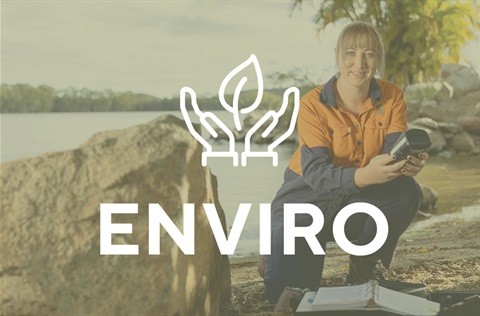Update #6 - Aquatic weed clearing, Hoods Lagoon, Clermont
Published on 19 October 2022

Isaac Regional Council continues to monitor and manage the invasive floating aquatic fern – Salvinia molesta – and its infestation due to the disposal of home aquarium contents or ornamental pond plants into Hoods Lagoon in Clermont.
The weed management process is an ongoing program and eradication and not a one-off removal event, it could take more than three years to eliminate the invasive weed.
Our integrated management program for this pest plant involves mechanical removal, application of registered herbicides and the introduction of biological control agents.
Biosecurity Queensland has provided best practice methods in accordance with State recommendations and communication lines remain open.
WHAT IS COUNCIL DOING?
Mechanical removal
Several local government areas across Queensland are battling the same issues and it is influencing the availability of a mechanical harvester Council sourced last month.
Council is in constant communications with the contractor to lock in a date.
Council has purchased two skimmers, which will act a short-term solution, to also assist with the mechanical removal of the weed.
Officers will be onsite tomorrow to investigate the establishment of a containment fence near the causeway. Position, installation, impacts on water flow, cleaning and maintenance will be considered as part of the site visit.
An excavator (screened or unscreened) has been considered in the past in consultation with other local government areas however it is limited to the distance that the boom can reach and there is also increased safety issues with having a solid base to operate from.
Weevil breeding
Council is currently breeding biological control weevils for use at Hoods Lagoon in Clermont to assist with an environmentally sustainable approach to the aquatic weed management in the area.
The weevils – Cyrtobagous salviniae – have proven to be a successful biocontrol agent after trials by CSIRO scientists in the 1980s. The weevils will be released to top up the existing population in the lagoon, the gully and Sandy Creek once a sustainable population has been reached in the coming weeks.
Although effective in tropical areas, the salvinia weevil is not establishing as intensely in cooler southern Queensland and may take several years to fully control infestations in the region.
Depending on the size of the infestation and the environmental conditions, the time taken for weevils to control salvinia varies from one to three years.
WHAT WILL HAPPEN WITH THE UPCOMING WET SEASON?
Recent rainfall caused the lagoon to overflow releasing salvinia downstream. To Council’s knowledge the weed is largely isolated to the lagoon and the succeeding gully that joins Sandy Creek.
Officers began herbicide control of the gully last week once the water volume from the lagoon slackened and there Salvinia was no longer floating across the causeway.
This captured the larger bulk of Salvinia that was trapped within the first 50m of the gully and the most visual patch.
Regarding the extent of the salvinia spread following the recent rainfall event, officers will engage with land holders and sporting groups to inspect areas nearby.
HOW YOU CAN HELP
Council encourages residents to not dispose home aquarium and pond plants into our waterways.
Property owners to be vigilant and if you suspect Salvinia on your property, contact Council’s Customer Service Centre on 1300 ISAACS (1300 47 22 27) for identification and information.
Visit https://profiles.ala.org.au/opus/weeds-australia/profile/Salvinia%20molesta for more information.
JEFF STEWART-HARRIS PSM
Chief Executive Officer